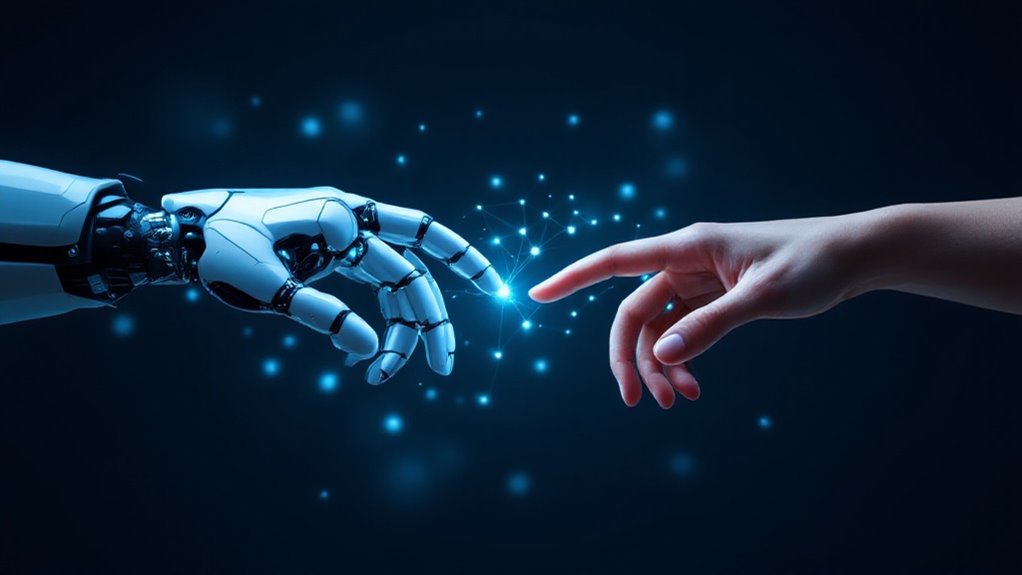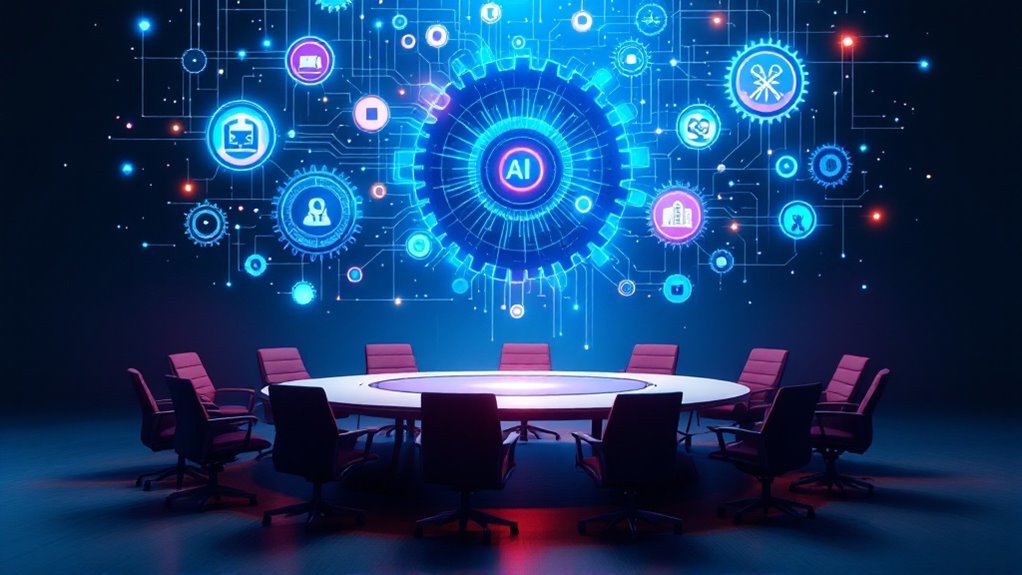The Turing Test, Alan Turing’s 1950 brainchild, is basically the ultimate “Are you smarter than a human?” for AI. Imagine a chatbot convincingly passing as your sassy aunt or moody coworker—if a judge can’t tell the bot from a person, that’s a win (sort of). This test doesn’t crown AI as self-aware, just decent at faking it. As tech gets better at the imitation game, folks wonder: are we flirting with genius or just building better parrots? Stick around—there’s more to the story.
Artificial intelligence: it’s either humanity’s next best friend, or the reason your toaster suddenly has opinions about your breakfast. At its core, AI is really just a computer system flexing its digital muscles, performing tasks we once thought only possible for the human brain—like solving problems, making decisions, or playing chess at a level that would make Garry Kasparov sweat. [AI encompasses both narrow intelligence, designed for specific tasks, and the elusive general intelligence that could one day match human reasoning across many domains.] AI’s main party trick is simulating human learning and creativity, minus the existential dread. Thanks to machine learning, these systems can adapt when handed new information, much like how you adapted to the realization that “password123” wasn’t so secure after all. Some AI can even operate autonomously—think driverless cars, or chatbots that answer your customer service queries with suspiciously chipper efficiency. Reactive Machines, the simplest kind of AI, can only respond to the present moment and don’t store past experiences, making them useful for narrowly defined tasks but limited in flexibility.
Not all AI is created equal, though. Here’s the cheat sheet:
- *Narrow AI*: Good at one thing, like recognizing faces or translating languages. Siri, Alexa—they’re the overachievers of narrow AI.
- *General AI*: The holy grail, still theoretical. This would be a machine that matches human intelligence across the board. Not Skynet, not yet.
- *Superintelligence*: The stuff of sci-fi. AI that makes Einstein look like he’s playing with alphabet blocks.
- *Cognitive Architectures*: Combining different AI systems to mimic human thinking—basically, Voltron for brains.
Applications? Oh, everywhere:
Healthcare—AI helps doctors spot diseases;
Finance—it flags fraud before you notice your credit card is maxed;
Transportation—self-driving cars plot routes while you nap.
But with great power comes great… headaches:
- Bias: AI can be as prejudiced as your least favorite relative, if trained on dodgy data.
- Privacy: Big data means big questions about who’s snooping.
- Job Displacement: Some jobs may go extinct (looking at you, telemarketers).
- Security Risks: Hackers with AI? Yikes.
From Alan Turing’s early musings to today’s deep learning marvels, AI’s evolution is part genius, part cautionary tale. [The field has benefited from the work of pioneers such as Geoffrey Hinton and Marvin Minsky, and is now driven by major companies like Google and IBM pushing the boundaries of what AI systems can accomplish.] Just remember: your toaster might not pass the Turing Test, but it’s definitely watching.









